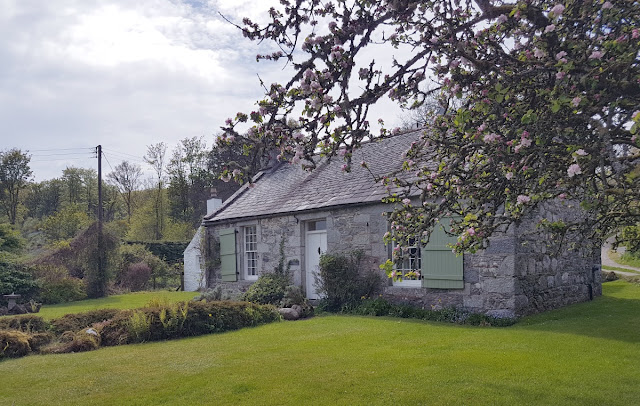Caves and Smuggling in the Machars
Monrieth/Burrow Head area caves click here for map
The most important and most visited cave in the area is St Ninnian's cave, see blog 'An amble to St Ninnian's cave', but this area of the Machars has many caves, see the film above.
Doo Cave (Burrow Head) Sheep Cave (Burrow Head) Johnny Logie's Cave (Burrow Head) Cave (Burrow Head)
One of which is streaked red and known as the ‘Butcher’s Cave’, it was also considered for use in the Wicker Man but tidal restrictions made filming too difficult.
Johnny Logie's Cave - Hermits Cave
Johnny Logie was a hermit who lived in this cave for more than 20 years. Originally a miner who from Ayrshire, he was injured in a pit accident which left him half blind and deaf, after which he retreated to this lonely spot beside the shore of Luce Bay. Here he cultivated his own crops and was virtually self sufficient. He left his cave in 1962, dying from pneumonia soon afterwards.
Garrerie’s Cave
‘A cave on the shore of Knock tradition says that the Laird of Garrarie used to take refuge here during a period of religious persecution in Scotland hence the name.'
Gordon of Garrarie was a forfeited fugitive in 1680 and 1681 for his part in the Presbyterian Rising of 1679. He was one of the Wigtownshire lairds who reached the Covenanters’ camp near Bothwell Brig a couple of days before the battle. He lived close to the site of the cave named after him.'. Link
PDF click here Solway Firth Partnership
Caves and Mines click here
Maps click here
Begg's Hole near Garlieston link where Covenentar Begg hid.
Smuggling in the Machars
Each coastal farm had its own “port” made by clearing the rocks away so that a ship could beach at high tide, unload and reload and float off at the next high tide. Many of these are still visible a little before and after high tide.
Later these inlets were used by smugglers for landing brandy, tea and other high duty items brought across from the the Isle of Man, stored on the farms and then transported onwards to Glasgow and Edinburgh.
Luce Bay
Philip and Mary Point is at NX325455 red map button High and Low Clome Farms are at NX3445 red map button off a minor road, signposted Mochrum and Barrachan, that joins the A747 about ¼ mile north of Port William. There is no public access to either farm.
This bay close to the mouth of the Solway has some gently sloping beaches, and a great deal of contraband came ashore here. Not all of it was unopposed: one clash that was particularly humiliating for the preventive forces took place just off Philip and Mary point on the east side of the bay. Local troops heard about a landing, and lined up on the beach, while the two smugglers' luggers, armed with a total of 36 guns, and with a complement of 100 men, hovered offshore. The smugglers shouted to the troops that they should retire a little, as a run was about to take place, and they did not care to be observed too closely. The alternative — a fight against far superior forces — was declined, and the dragoons retreated. When the excisemen returned, there was a reward waiting for them — a row of barrels on the shoreline.
Most of the buildings in the area had hiding places for a tub or two, and some still bear mute witness to the illegal activities that took place here. At Clome Farm, on the outskirts of Port William, the 'brandy-hole' was covered by a fireproof trapdoor — the farmer lit a fire in the kiln above it when he expected a visit from the revenue men [308]. The 'farmer' was actually a smuggler in disguise, for the farm was the headquarters of a smuggling company, and an underground passage from the cellar of the farmhouse led to the nearby beach. The passage was revealed to the authorities by an informer, whose life was spared only by luck — a sniper from the betrayed smuggling gang would have shot him as he walked on the beach if the traitor's female companion had not stepped into the line of fire.
At the farm in 1777, there was a haul of 80 chests of tea, 140 ankers of brandy, and 200 bales of tobacco.
The farmer there can still point out evidence of the brandy holes: a combine harvester parked over an underground chamber began to sink into the ground, and a depression in the farmyard bubbles as water seeps into the tunnel below. The entrances to the tunnel and brandy hole have long been lost, though.
The above from Smugglers Britain here


Comments
Post a Comment